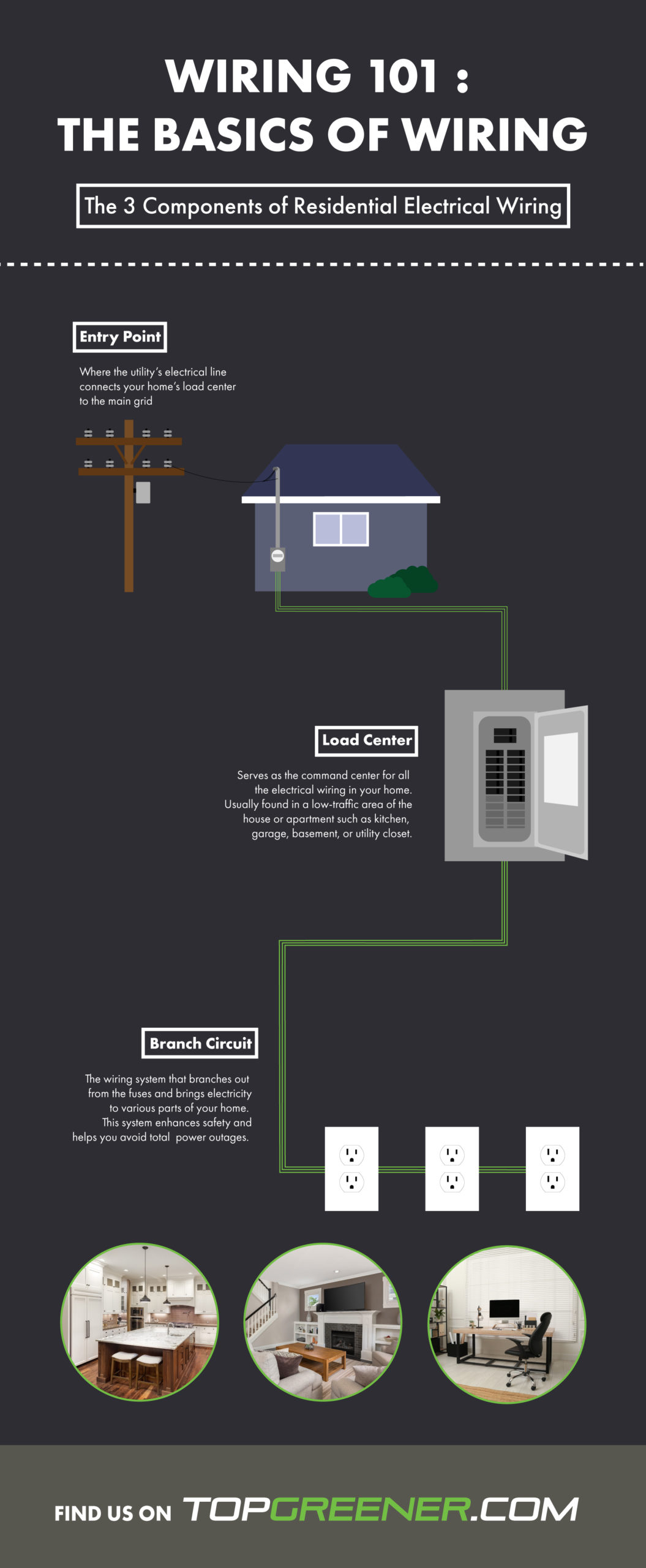When it’s time to upgrade a light switch or wall outlet in your home, it can be tempting to skip professional installations and do the wiring yourself. But, while many things in life are best learned through experience, electrical wiring is not something to blindly mess around with. Jumping into electrical work without the proper knowledge is extremely dangerous because there are countless things that could go wrong. One wrong move can lead to a serious injury, or even death, from electrical shocks or fires. For this reason, you will want to do your research and make sure you have the proper know-how before you even consider touching your home wiring yourself.
Welcome to Wiring 101, where we are taking it back to basics to help equip you with the proper knowledge to better understand and work with your home’s electrical wiring. In this first installment, we’ll quickly walk you through the basic components of electrical wiring.
The 3 Components of Residential Electrical Wiring
The electrical wiring in your home has three primary components that you should get to know. These are the entry point, the load center, and the branch circuits. Let’s take a closer look at each component individually:
1- Entry Point – The service entry point is where the utility’s electrical line connects your home’s load center to the main grid. It is important to properly protect the entry point, keeping it free of obstructions and moisture – if anything were to interfere with the wiring, it could cause a serious shock hazard, to say the least.
2- Load Center – As the name suggests, the load center or panel serves as the command center for all of the electrical wiring in your home. You may be familiar with a fuse box or circuit breaker in your home, and if so then you will be pleased to learn that these are just alternate names for the load center. This component is usually found in a low-traffic area of the house or apartment, such as the kitchen, garage, basement, or utility closet. The wiring to all areas of your home will start here, this is also where you can manually cut or supply power to different areas when needed.
3- Branch Circuits – Circuits are the wiring systems that branch out from the fuses and bring electricity to the various parts of your home. Having multiple circuits allows the home to be divided into sections, each one connected to a different circuit on the load center. This system is great because it enhances safety and can help you avoid a total power outage. If too much power is drawn from any one circuit, the individual circuit will shut down to avoid shocks and fires. Circuits can also be shut off manually, which allows you to work on the electrical wiring in one area without having to shut off power to the entire home.
Whether you are looking to work on the wiring yourself or simply purchase new devices for professional installation, it is crucial to know and understand these components of your home’s electrical wiring. Don’t get too excited now that you know these basics; there is still lots to learn before taking it into your own hands. Be sure to check out the next installment of Wiring 101, where we will go over the essential safety basics to know when working with electricity.
